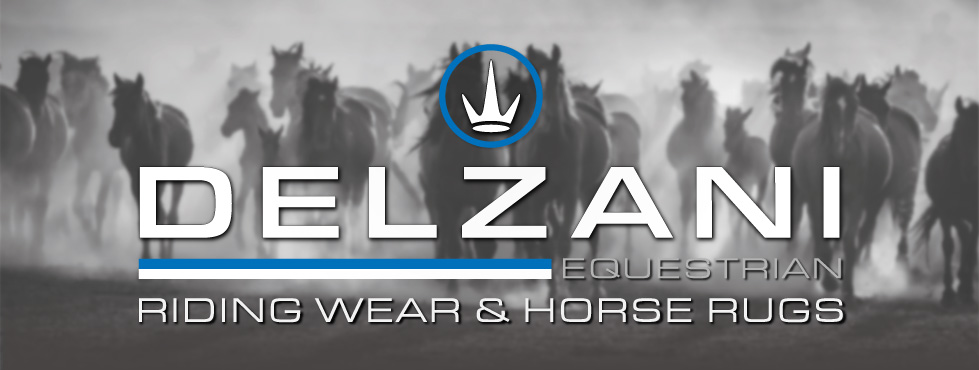Are Hay Nets and Hay Bags Safe for Horses? A Complete Guide for Australian Owners

Feeding Smarter: The Pros, Cons, and Safe Use of Hay Nets and Hay Bags
Updated August 2025
A practical guide for Australian horse owners on how to choose, use, and maintain hay nets and hay bags safely - reducing waste, supporting digestive health, and keeping horses calm and content year-round.
For many Australian horse owners, hay nets and hay bags are everyday feeding tools, keeping hay tidy, reducing waste, and slowing down greedy eaters. But ask around at a show or an agistment centre, and opinions vary. Some riders swear by them as essential for horse health and calmer stabling, while others worry about risks such as tangled hooves, tooth wear, or respiratory issues. So, are hay nets and hay bags safe for horses? The truth lies not in the products themselves, but in how they’re chosen, hung, and maintained.
What Are Hay Nets and Hay Bags?
Both horse hay nets and hay bags are designed to extend feeding time, mimic natural grazing, and reduce hay wastage. They support digestive health, calm behaviour, and make feeding more efficient, but misuse can create risks. Key differences include:
- Hay nets: mesh nets that release hay gradually, often used as slow feeder hay nets to extend chewing time.
- Hay bags: solid-sided feeders with openings that control intake and reduce dust.
- Bale carry & hay storage bags: transport and protect hay cleanly during travel or paddock feeding.
- Benefits: promote slow eating, better gut health, calmer horses, and less hay waste.
- Risks: entanglement, tooth wear, or respiratory irritation if poorly set up.
The Benefits: Why Hay Nets and Bags Are So Popular
Horses are trickle feeders, designed to graze for 18 - 20 hours a day. Their stomach empties every 25 - 30 minutes, meaning long gaps without forage can increase the risk of ulcers, colic, and stress behaviours. A slow feeder hay bag or hay net releases only small mouthfuls at a time, slowing intake and mimicking natural grazing. This supports digestion, reduces colic risk, and keeps horses relaxed and focused. They also save money by cutting hay waste, keeping feed off the ground and away from mud, manure, and wind scatter.
The Concerns: What Can Go Wrong?
Like any piece of gear, hay feeders aren’t risk-free. The most common issues include:
- Entanglement: Hooves, shoes, or teeth may become caught in worn or loose netting.
- Dental wear: Very tightly packed hay or fine mesh can encourage scraping.
- Respiratory issues: Dusty hay or nets hung too high may irritate the airways.
- Frustration: Some horses become stressed if mesh size is too small to access easily.
The good news? Most risks can be avoided with proper use and regular checks.
Safe Use Checklist
- Hang nets or bags at chest height, lower than withers, but clear of hooves.
- Match mesh size to your horse’s behaviour and experience.
- Break flakes apart before loading; avoid overstuffing.
- Inspect nets daily for frays, holes, or worn straps.
- Only use ground-level nets with barefoot horses in safe, enclosed areas.
Mesh Size: One Size Doesn’t Fit All
While small-mesh slow feeder hay nets help greedy horses, too-small openings can frustrate or damage teeth. Nervous or younger horses often do better with larger holes until trained. Ponies and good-doers may progress to finer mesh. Always ensure foals and minis use nets smaller than hoof size, and avoid large-holed nets on the ground with shod horses.
Respiratory Health: Dust, Chaff and Mould
Most respiratory issues come from poor hay quality, not the hay feeder itself. In Australia, dusty summers and damp winters make hay storage challenging. Reduce risks by feeding at chest height so dust falls away, soaking dusty hay, and storing bales in dry, covered areas. Solid-sided hay bags or hay storage bags are excellent for windy barns or transport.
Routine Maintenance
Small tears or frays quickly turn dangerous. Check hay nets and feed bags daily, replace damaged gear, and wash periodically to prevent dust or mould build-up. Stronger materials like ripstop canvas or 600D Oxford fabric last longer under Australian paddock conditions.
Seasonal Challenges in Australia
Summer: Dust storms and drought increase risks of sand colic. Hanging slow feeder hay nets keeps hay clean and controlled. Always provide fresh water and electrolytes.
Winter: Mud and damp ground waste hay quickly. Solid slow feeder hay bags keep feed off the ground, while fibre digestion helps horses stay warm. Proper storage and covered hay bale bags protect your hay supply.
Alternatives and Rotation
Safe feeding often means rotating options. Many riders use hay nets, hay bags, and hay bale bags depending on conditions. For example, nets tied to tyres suit barefoot paddocks, hay bags are best for floats and show yards, and bale bags work for storing or transporting large amounts cleanly.
So, Are They Safe?
The short answer: yes. When hung correctly and maintained, horse hay nets and feed bags are safe for most horses. They remain one of the best solutions for reducing waste, stretching hay supplies, and supporting natural grazing behaviour.
Delzani’s Safe Feeding Picks
- Slow Feeder Horse Hay Net Bag: heavy-duty polyester with ~50mm mesh, steel bottom ring and marine-grade tie rope.
- Deluxe Slow Feeder Hay Bag: 600D Oxford fabric, 2+ biscuit capacity, reinforced quick-release straps.
- Canvas Horse Hay Feed Bag: ripstop canvas with reinforced seams, ideal for travel or stables.
- Horse Hay Bale Bag: 1600D fabric with moisture-proof lining for clean transport and storage.
Frequently Asked Questions
Are hay nets safe for shod horses?
Yes, if hung at chest height and checked daily. Avoid ground-level nets for shod horses to prevent hoof entrapment.
What mesh size is best?
Start with medium mesh. Nervous horses may prefer larger holes, while ponies and good-doers can progress to smaller, slow-feeder openings.
Can hay nets cause respiratory problems?
Only if dusty hay is used or nets are hung too high. Feed at chest height with clean hay, soak when necessary, and consider solid hay bags in windy barns.
Ready to feed smarter and safer? Explore the complete Delzani Horse Hay Nets & Feed Bags range built for Australian riders and trusted to keep horses healthier, calmer, and better fed.
Written by Jane Griffiths - An experienced Australian horse owner and product developer with over three decades immersed in equestrian life. Jane has spent years refining horse rugs, tack, and riding apparel to better suit Australian climates. She has enjoyed countless weekends at gymkhanas, show jumping events, and pony club competitions with her daughter, and still loves hitting the trails with friends whenever she can. Her lifelong passion for horses and hands-on understanding of equine comfort continue to shape her practical, rider-first approach to horse care and product design.
Related Equestrian Guides
Horse Hay Net & Feed Bags
Protect horse health and reduce hay waste with Delzani hay nets, hay bags, and slow feeders. Smarter feeding solutions built tough for Australian paddocks, floats, and stables.
Horse Hay Nets and Feed Bags: Smarter Feeding Solutions
Keep hay off the ground, stretch your feed bill further, and keep horses calmer with the right feeder. Learn when to choose a hay net, hay bag, or bale carry bag for cleaner, safer, and smarter feeding in Australian conditions.
Hay Net vs Hay Bag vs Hay Bale Bag: Feeding Solutions for Australian Horses
Cut hay waste, protect your horse’s digestion, and make daily feeding easier. Learn when to use hay nets, hay bags, and bale carry bags for smarter, cleaner feeding in Australian conditions.
Seasonal Hay Feeding Challenges in Australia
Feeding hay in Australia is never simple. From heatwaves and dust storms to muddy winters and show travel, learn how hay nets, bags, and bale carry bags keep feeding cleaner, safer, and healthier for horses year-round.
Colic in Horses: How Smarter Hay Feeding Helps Reduce the Risk
Colic is a leading health risk for horses in Australia, but the way you feed hay makes all the difference. Learn how Delzani’s hay nets, hay bags, and bale carry bags support natural digestion, prevent waste, and help reduce the risk of equine colic.











